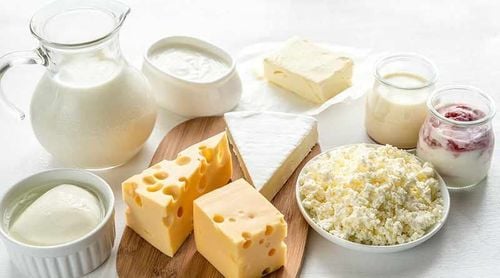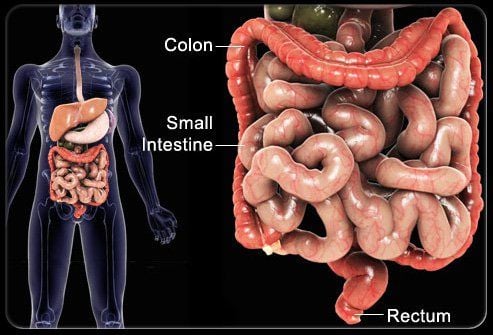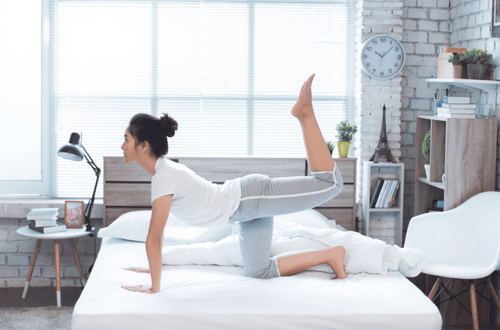This is an automatically translated article.
Plank is one of the simplest exercises you can do it's simple in terms of appearance and number of steps. However, simple does not mean easy plank. Holding a plank can even be easy for a few seconds, but since plank is an exercise pose that can be held indefinitely, its difficulty can range from easy, short-term planks to endurance tests.
1. What is Plank?
ThePlank is a simple yet effective core exercise that helps you build stability and strength throughout your entire body. You can do the plank in a number of different ways, but the main goal of the plank exercise is to place your body perpendicular to the ground, your stomach down, and lift your torso off the ground with your elbows or hands. .
Plank is similar to being stuck in an extended push-up without actually moving your body weight up or down. This sounds pretty and is much easier to do than push-ups, but planks can become a strenuous exercise very quickly.
Plank is a popular exercise in many strength training routines:
Plank is a popular pose in many yoga moves, cardio-focused yoga all use the plank position. This pose can be held for a few seconds or used as an interval pose. connects the other two parts of the process. Planks are used as part of a training regimen for professional boxers who alternate between sets of push-ups, sitting, planks, and sit-ups, each reduced in duration determined by a set of sets. count the time and end with the coach's whistle. . Many professional sports teams, such as hockey and football, use the plank as part of their exercise routine because it is so effective at improving strength in many muscle areas of the human body.
2. What makes the plank exercise so special?
There are a few good reasons why planks are so popular. Some people even consider this as their favorite exercise. You should understand why the plank is so important before you start learning how to do it well, as then you will be more likely to keep it as part of your daily routine.
Plank is a bodyweight exercise. Bodyweight exercises are exercises where you can't do anything but your body, appealing for a number of reasons.
You can do bodyweight exercises pretty much anywhere; the most equipment you need is a wall to lean on or a bench to curl you and since they are based on your own body weight they will always be tailored to your own training needs as you gain weight you will train with more weight similar to gaining such as the amount you want to squeeze. Planks work to build a large number of muscles in your body, which makes them attractive for all kinds of strength, endurance training, you might call it. Planks can even be a boon for those looking to get a cardio workout. People of a fairly healthy age can do plank, as long as they are still healthy enough. Children can start doing planks and if they continue to do so, they will be able to continue the exercise into old age.
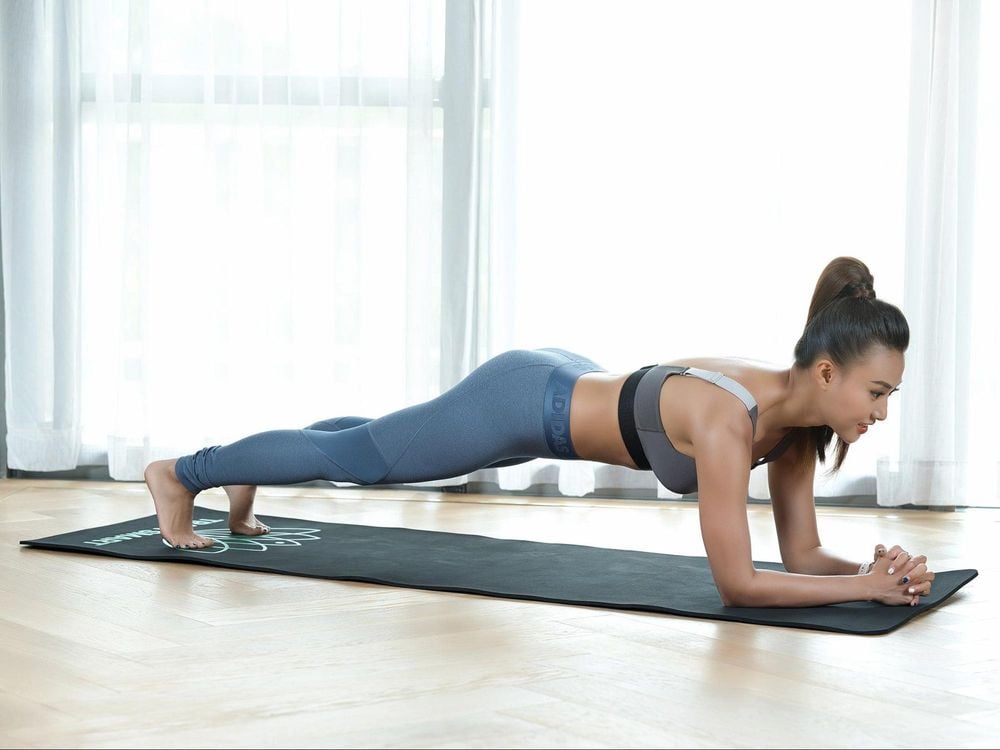
Bài tập Plank là một bài tập cốt lõi đơn giản mà bất kì lứa tuổi nào cũng có thể thực hiện
3. How to do plank?
To do the high plank also known as the front plank, the most common way is to simply arrange as if you were doing a push-up. Raise your head to this position, make sure your back is completely straight, and stay here:
Make sure your elbows are directly below your shoulders. Place your wrists up with your elbows. Push your body upwards and keep your chin tight (ie) to your neck. There should be a bit of space, perhaps a few problems. The recommended time for beginners is 30 seconds, but if you can't do that, you can consider anything less than good practice - or switch to a forearm plank, where you place your weight. yourself on your forearm instead of your palm, allowing you to hold office for much longer.
Make sure you keep your chest and abs tight during the plank session. This allows you to understand how your core muscles work together and also ensures the right balance
Making sure you always activate your thighs this is another important part of maintaining balance while planning .
Your body will look like a straight line (save for natural lines) during the plank.
Rest for about a minute between sets and repeat the exercise at least three times.
4. What are the health benefits of doing plank?
4.1. Plank will improve your posture Plank can improve your posture, which is extremely important for a number of things. Good posture prevents your body from developing injuries caused by improper weight distribution, which can affect everything from large exercise routines to small movements like bending over. Proper posture shows confidence and self-assurance, which can be very attractive to those hoping to attract the opposite sex. Since planks work your core, that means they work essentially your entire body, from your pelvic area to your shoulder and leg areas. The plank exercise strengthens your spine, rhombus, and trapezius as well as your abs, giving you a naturally strong stance as they develop in strength. Developing your posture has It can improve some diseases and prevent the onset of others. Good posture means you are keeping your bones in alignment. This means you'll reduce your risk of bone injuries, you'll be able to lift more, and your body will put less stress on your joints and bones to prevent the development of conditions like arthritis. Your posture means you'll position your internal organs better, which can neutralize any digestive problems or other functional problems that may be caused by your internal organs. being forced out of its natural position due to poor posture. Good posture increases your height, makes you appear thin and actually increases your height a bit; these rewards come without weight gain (although this may come naturally as you continue to train.)
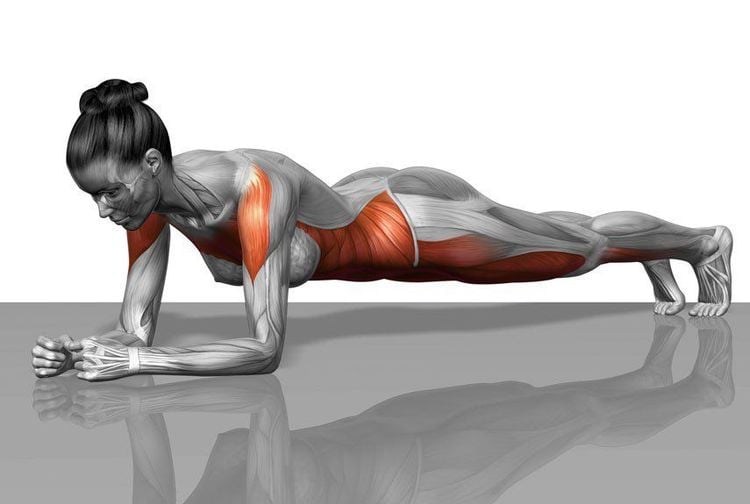
Động tác Plank giúp rèn luyện các nhóm cơ và cải thiện hiệu quả tư thế của bạn
4.2. Plank for back pain This benefit is partly due to the improved posture the plank provides, but the importance of the plank's ability to affect back pain deserves its own share. Planks not only prevent certain types of back pain, but also help promote back health in general.
The improved posture alone helps to align the vertebrae, which eliminates unnecessary stress in the spinal region. This also helps to align the ligaments in the back properly, preventing back pain.
Plank helps you build the muscles in your abs, which add extra support to your posture. Having strong abs also means your body feels lighter remember you are holding hundreds) pounds per second when you stand and all this stress goes back to your bones, joints and muscles. A strong stomach puts a lot of pressure on your back (this is part of the reason belts are so helpful when carrying a heavy backpack)
Osteoarthritis, a degenerative condition involving the joints in the body your body, is less likely to grow if the posture is right. As you age, your body naturally loses some of its mobility. Having proper posture and strong muscles helps prevent this from happening too quickly.
Neck and shoulder pain can also be caused by poor posture or by straining the muscles in your core, so keeping them strong is an important way to avoid unwanted injuries in these areas.
4.3. You'll Become More Co-ordinated One of the best benefits of a plank comes not from actual muscle growth but from its ability to help you train your muscles more consistently.
The body uses its core muscles to help maintain balance. This is evident when you are running, cycling, exercising in any way, or during active recreational activities such as dancing. Many people think that their poles are responsible for their balance, but a large part of your stability comes from your core.
Having a strong core helps you avoid possible injuries to single muscle groups that can be overworked by trying to balance during an active workout. For example, snowboarding relies heavily on calves for balance, and having a strong body can relieve some of this stress.
Core strength training also teaches you how your body and muscles work together and can help improve your ability to work with a single unit instead of trying to control a bunch of other muscle groups together at the same time.
4.4. Planks Improve Your Flexibility Unlike some exercises that simply improve the strength of your muscles, planks offer a wide variety of benefits, not least of which is improving your flexibility. . Plank makes your back muscles not only your glutes, but all the muscle groups in the back of your body more flexible. These include the muscles around your shoulder and collarbone area, and your shoulder blades themselves. These muscle areas will grow and stretch as you continue to plank, which is great because these areas are often overlooked in many traditional exercise routines. Plank is an important pose in many yoga routines. Yoga is a great form of exercise for those hoping to build core strength and improve flexibility, the plank being considered a core element of many yoga routines shows how beneficial it is. Which is not only for your core but also for your flexibility. .
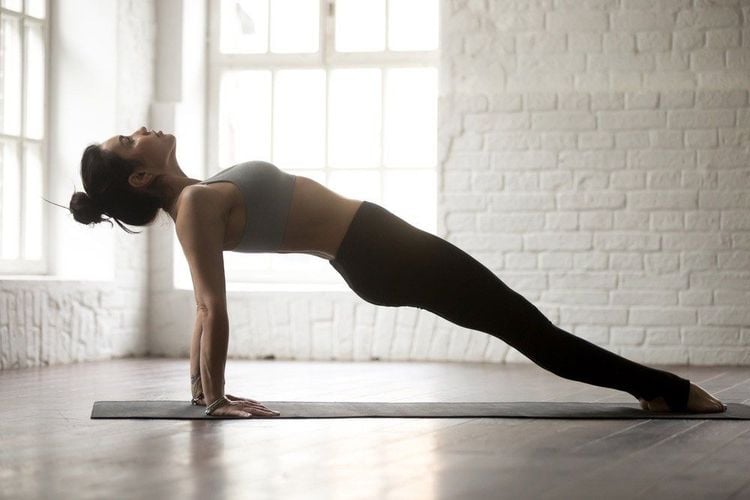
Biến thể dạng ván của động tác giúp cải thiện nhóm cơ sau và làm cơ thể bạn linh hoạt hơn
4.5. Planning Will Improve Your Metabolism Planks burn more calories when performed each day, compared to other core exercises like sit-ups. More importantly, the plank helps strengthen the giant muscle groups in your body. Having strong muscles means you burn more calories, even when you are resting.
This makes the board important for people who work in offices or other inactive jobs. If you have strong muscles in your body, you will be able to burn calories more efficiently and have less risk of gaining weight.
Best of all, having strong muscles means you burn more calories with exercise, even if it's simply walking to work or school in the morning. It also means you'll burn more calories while you sleep!
The other side of this benefit is that, since you'll burn more calories, you'll feel hungry more often. This can be a great opportunity for you to start eating a healthy diet because you will be hungry for more calories, you can eat more, and if you decide to eat nothing but healthy foods , you'll start reaping the benefits of a healthy diet in no time.
A lot of people consider constant hunger a terrible pain because it means they will gain weight. This may be true, but it only becomes a problem if the person has a bad diet. Eating a lot of food can be good for you and if you are exercising and eating a good diet you will become much healthier.
4.6. Your mood will improve A lot of the groups that the plank targets are muscle groups that are often tense and knotted, and contribute a lot to stress in the human body. Know that your body is under physical stress that can drain your mental state.
Stress in certain parts of the body, such as legs, can lead to more stress in other parts of the body due to your natural need to compensate if your legs are tense, you'll try to put less weight on them, which can strain your back.
All of these worries and stressors can combine into one form of anxiety, or conversely having a lot of stress and anxiety in your mind can lead to your body experiencing a mental reaction. psychosis (a physical response caused by a mental process). make your muscles tense. These types of muscle tension are often eliminated with things like massage.
Fortunately, the plank can remove the physical stressors in this case, putting you at ease mentally. You will no longer have to worry about work causing stress on your body if you are strong enough to handle it.
Please follow the website ( www.vinmec.com ) for more information on health care instructions, which we will update regularly.
Please dial HOTLINE for more information or register for an appointment HERE. Download MyVinmec app to make appointments faster and to manage your bookings easily.






